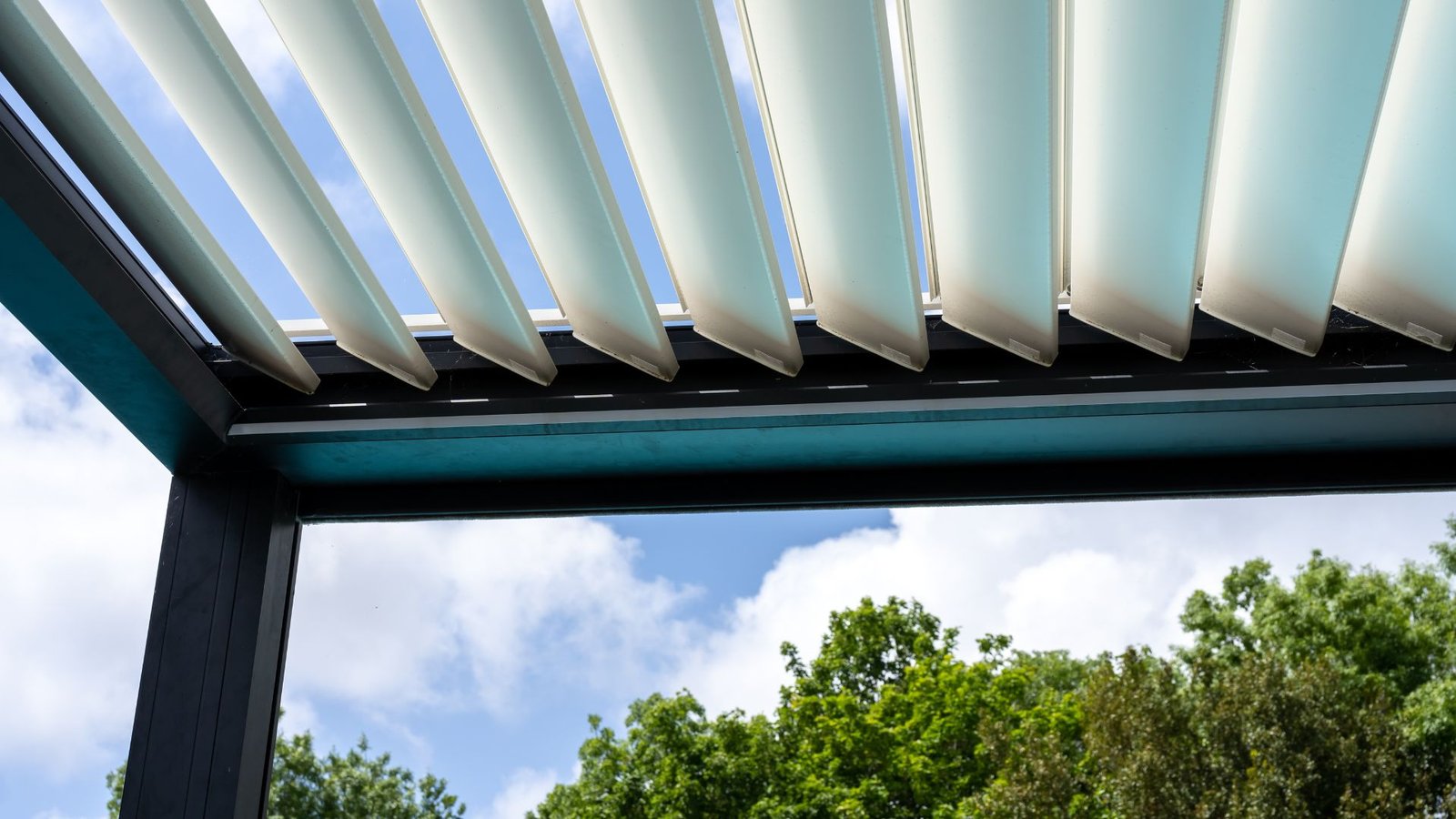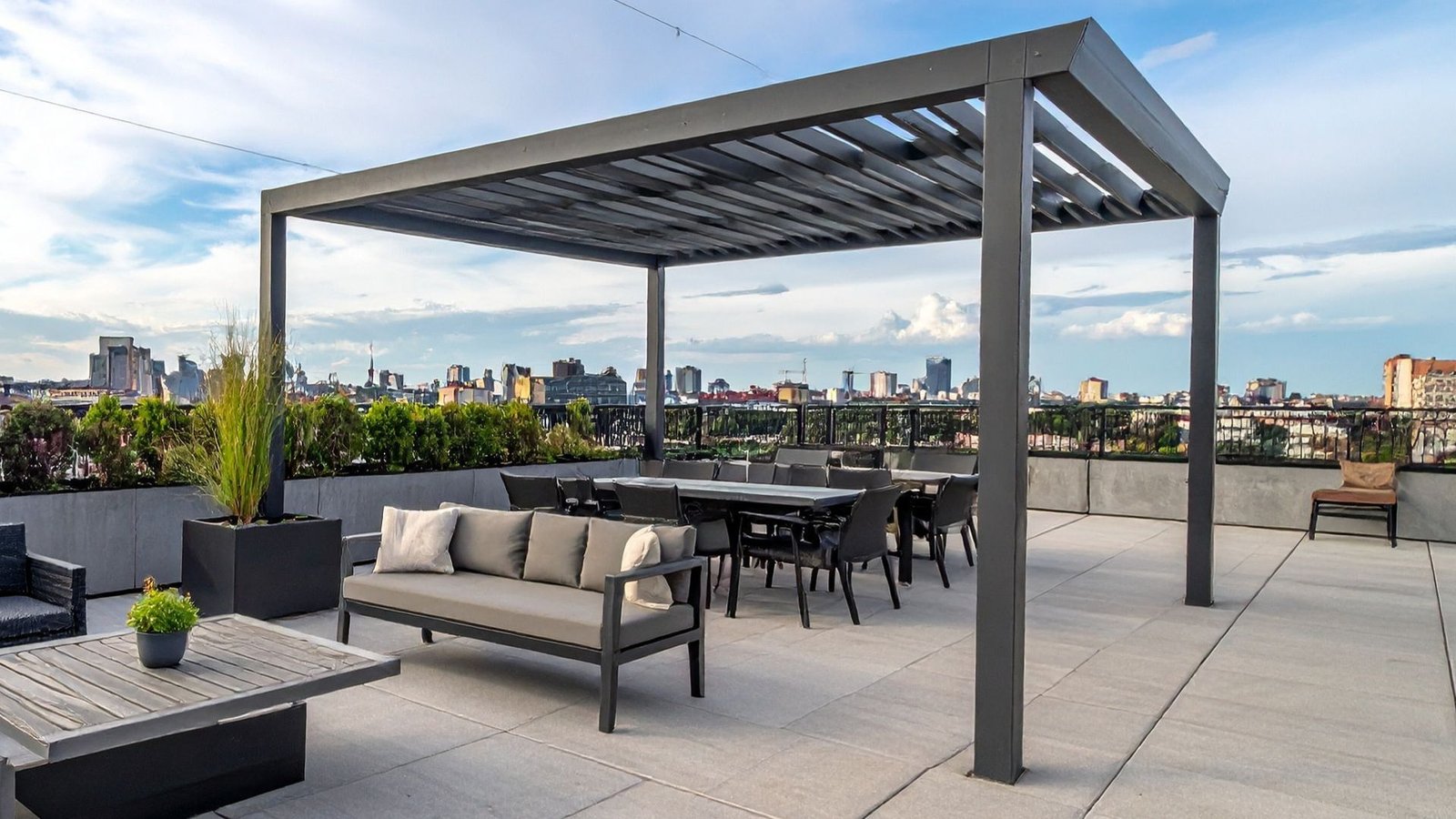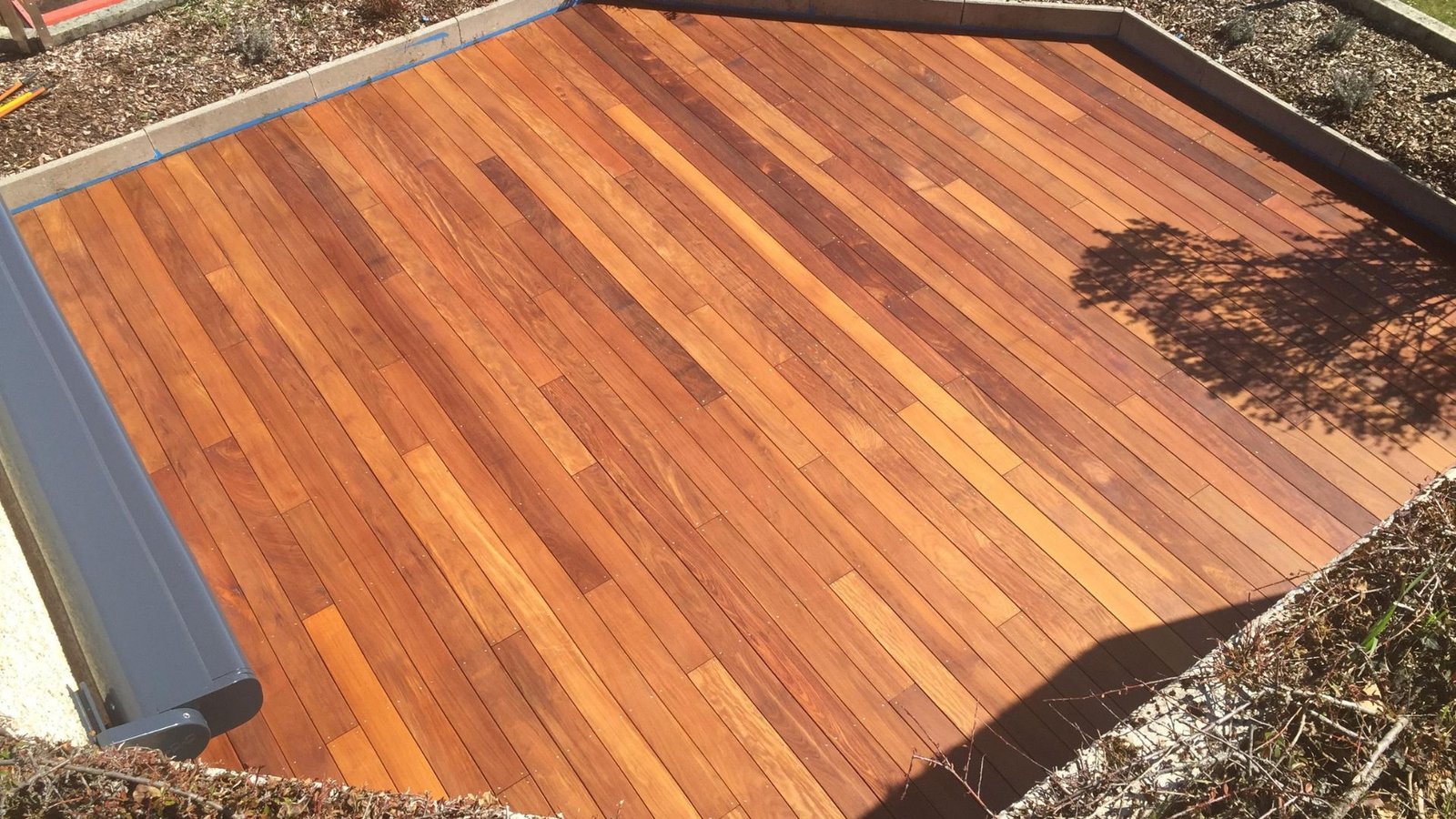Welcome to the world of composite decking in New Zealand, where outdoor living meets modern, low-maintenance solutions. Imagine stepping onto a beautiful, durable deck that looks like real wood but doesn’t require the constant upkeep—no more sanding, staining, or painting. Whether you’re a homeowner looking to refresh your backyard, a DIY enthusiast seeking a new project, or someone building a home from scratch, composite decking is becoming the go-to choice for Kiwis. Combining eco-friendly materials, long-lasting performance, and a sleek, stylish finish, composite decking offers the perfect blend of sustainability and practicality for NZ’s unique climate.
Composite decking in New Zealand offers a durable, eco-friendly alternative to traditional timber decking. Made from a mix of recycled wood fibers and plastic, it requires minimal upkeep, resists weathering, and is perfect for NZ’s varied climate. With composite decking, you can enjoy the look of natural wood without the hassle of sanding, staining, or sealing—making it an ideal choice for homeowners seeking both style and practicality in their outdoor spaces.
Table of Contents
What Is Composite Decking?
Composite decking has become an increasingly popular choice for homeowners looking to enhance their outdoor spaces without the hassle and upkeep associated with traditional timber. Here’s a closer look at what it is, its various types, and why it stands out in terms of aesthetics and practicality.
Definition and Composition
Composite decking is a type of outdoor flooring material made by blending wood fibers, plastic, and bonding agents. This mixture results in a durable and low-maintenance product that closely resembles natural wood while offering improved performance. In simple terms, composite decking provides the look of timber but without the need for constant maintenance, such as staining, sealing, or painting.
The main ingredients used in composite decking are:
- Wood fibers: These are often recycled and provide the natural appearance and texture similar to real wood.
- Plastic: This is typically made from recycled materials like polyethylene or polypropylene, which give the decking its resistance to moisture and decay.
- Bonding agents: These bind the materials together, ensuring the composite decking is strong and resistant to splitting or warping.
Thanks to this composition, composite decking is not only eco-friendly but also offers long-lasting durability and low upkeep, making it an ideal alternative to traditional wood decks.
Types of Composite Decking
There are two primary types of composite decking available, particularly in regions like New Zealand capped and uncapped composite decking. Understanding the differences can help homeowners choose the right option for their outdoor space based on their budget and maintenance preferences.
- Capped Composite Decking: This type of decking features an extra layer, or “cap,” that surrounds the core materials. The cap is made of a polymer shell that provides enhanced protection against stains, fading, moisture, and mold. Because of this additional protective layer, capped composite decking is more resistant to wear and tear, making it a premium choice for long-term durability. It also requires less maintenance, as the surface is highly resistant to the elements. This makes capped decking ideal for outdoor areas exposed to harsh weather or high foot traffic.
- Uncapped Composite Decking: Uncapped composite decking is often the more budget-friendly option. While it still offers the benefits of composite materials—such as reduced maintenance and resistance to rot—it lacks the added protective cap found in its premium counterpart. As a result, uncapped composite decking is more susceptible to fading and staining over time, especially when exposed to the elements. However, with regular cleaning and care, it can still be a durable and attractive choice for outdoor spaces.
Visual Appeal
One of the main reasons composite decking has gained popularity is its ability to mimic the look of natural wood while offering a sleek, modern finish. Many homeowners love the warmth and aesthetic appeal of traditional timber but want to avoid the tedious upkeep. Composite decking solves this dilemma by providing a product that replicates the grains, textures, and colors of wood without the need for constant maintenance.
Modern composite decking comes in a variety of finishes, allowing homeowners to choose from a wide range of colors and textures that best suit their outdoor design preferences. Whether you prefer the rustic look of weathered timber or the clean lines of a contemporary style, composite decking can be customized to match your vision. Its consistency in color and texture also ensures that your deck will maintain its appearance over time, without the fading and warping often associated with natural wood.
In conclusion, composite decking offers a versatile, low-maintenance, and visually appealing alternative to traditional timber decking. With options like capped and uncapped decking, homeowners can select the best material for their budget and lifestyle, enjoying the timeless beauty of wood with the modern benefits of composite technology.

Benefits Of Composite Decking For New Zealand Homeowners
When it comes to upgrading outdoor spaces, composite decking offers a range of advantages that make it a top choice for New Zealand homeowners. Whether you’re dealing with the country’s diverse weather conditions or simply seeking a long-lasting, low-maintenance solution, composite decking stands out. Here’s why:
Durability: Built to Withstand New Zealand’s Climate
New Zealand’s weather can be as varied as its landscapes. From the sun-soaked North Island to the windy and often chilly conditions of the South Island, homeowners need outdoor materials that can handle it all. Composite decking is specifically designed to endure these diverse climates. It resists the wear and tear caused by constant sun exposure, heavy rain, high winds, and even the salty air of coastal regions. Unlike traditional wood, which may warp, crack, or fade, composite decking remains strong and vibrant year after year.
- Example: “From the sun-soaked north to the windy shores of the South Island, composite decking is built to handle it all!”
Low Maintenance: More Time Enjoying, Less Time Maintaining
For many homeowners, the dream of a beautiful deck can often be overshadowed by the maintenance that traditional wood requires. Composite decking, however, flips the script. With no need for regular painting, staining, or sealing, composite decking is ideal for those who want to spend more time enjoying their outdoor spaces and less time maintaining them. A simple clean with soap and water is all it takes to keep your deck looking fresh and new. This easy-care solution is perfect for busy homeowners or those who simply don’t want the hassle of constant upkeep.
- Key Point: Composite decking means no sanding, staining, or sealing—just easy cleaning with soap and water!
Sustainability: A Greener Choice for New Zealand
New Zealanders are known for their love of the outdoors and commitment to environmental sustainability. Composite decking offers an eco-friendly alternative to traditional timber, as it’s often made from recycled materials, such as plastic and wood fibers. By choosing composite decking, homeowners reduce the demand for logging and the destruction of forests, preserving natural resources for future generations. It’s a choice that aligns with the Kiwi spirit of caring for the environment.
- Example: “In New Zealand, we’re proud of our environment. Choosing composite decking means you’re doing your bit for the planet.“
Cost-Effectiveness Over Time: A Smart Investment
While the initial cost of composite decking may be higher than traditional wood, it’s a savvy financial decision in the long run. With wood decks, frequent maintenance and repairs can add up over time, both in terms of money and effort. Composite decking, on the other hand, doesn’t require costly treatments, repairs, or replacements, making it a more economical choice over the lifespan of your deck. The durability and low upkeep result in significant long-term savings, proving that composite decking is worth the upfront investment.
Aesthetic Variety: Perfect for Kiwi Outdoor Living
Composite decking not only performs well but also looks fantastic in any setting. Whether you’re aiming for a rustic timber look or a sleek, modern design, composite decking offers a wide variety of colors, finishes, and textures to match your style. Its versatility means that you can easily find an option that complements your home’s exterior, creating a seamless flow between indoor and outdoor living. Kiwi homeowners can take advantage of composite decking’s ability to blend into a range of aesthetics, from traditional to contemporary.
- Example: “From rich timber hues to sleek modern greys, composite decking complements any outdoor style.“
For New Zealand homeowners looking to enhance their outdoor spaces, composite decking offers a wealth of benefits. Its durability, low maintenance, eco-friendliness, long-term cost-effectiveness, and aesthetic flexibility make it the ideal choice for Kiwi homes. Whether you’re battling coastal conditions or just want a deck that’s easy to care for, composite decking is a reliable and beautiful solution that suits New Zealand’s unique lifestyle.

Composite Decking Vs. Traditional Timber: What’s The Difference?
When it comes to decking choices, homeowners often face a tough decision between traditional timber and modern composite decking. Both options have their own unique advantages, but understanding the key differences can help you make an informed decision for your outdoor space. Let’s explore how they stack up in terms of durability, maintenance, cost, and environmental impact.
Durability Comparison
One of the most significant factors to consider when choosing between composite decking and traditional wood is durability. Over time, timber decking is prone to issues like warping, splintering, and rotting, especially in humid or rainy climates. Wood, by nature, absorbs moisture, which can lead to structural weaknesses if not properly treated and maintained. This can result in a shorter lifespan, and repairs or replacements may become necessary after only a few years of use.
In contrast, composite decking is designed to be far more resilient. Composed of a blend of recycled wood fibers and plastic, composite boards are resistant to the elements that often damage natural wood. They don’t splinter or warp, and they’re impervious to termites and mold. This means they can last for decades with minimal wear and tear, offering a far superior lifespan compared to traditional timber. For homeowners seeking longevity and minimal upkeep, composite decking is the clear winner.
Maintenance Needs
Traditional wood decking requires a significant amount of maintenance to keep it looking its best. Regular sanding, staining, and sealing are necessary to protect wood from moisture and UV damage. This not only takes time but also adds ongoing costs to the upkeep of your deck. If neglected, timber can quickly deteriorate, losing its aesthetic appeal and structural integrity.
Composite decking, on the other hand, is virtually maintenance-free. Unlike wood, it does not need to be sanded or stained, and it maintains its color without fading from UV exposure. A simple cleaning with soap and water is often all that’s needed to keep it in top condition. For busy homeowners or those who prefer a hassle-free solution, composite decking provides a low-maintenance alternative that looks great for years without the regular upkeep wood demands.
Cost Comparison
When it comes to initial costs, traditional timber may seem like the more affordable option. However, it’s important to look beyond the upfront price. The cost of wood can quickly add up due to the necessary maintenance products such as sealants, stains, and deck cleaner. Not to mention the potential costs of repairs or replacement due to rot, warping, or insect damage.
While composite decking typically has a higher upfront cost, the long-term savings make it a more cost-effective option. Since composite decks require very little maintenance and don’t need to be replaced as often, the overall investment over the life of the deck is lower. For homeowners who are budget-conscious but thinking long-term, composite decking is often the smarter financial choice.
Environmental Impact
Another crucial consideration is the environmental impact of your decking choice. Traditional timber decks require the harvesting of natural wood, which can contribute to deforestation if the wood is not sustainably sourced. Additionally, the need for chemical treatments and finishes can have a negative effect on the environment.
Composite decking, however, is made from a combination of recycled wood fibers and plastics. This repurposing of materials helps reduce waste and makes composite decking a more environmentally friendly choice. Many composite decking brands also focus on sustainable manufacturing practices, further reducing their environmental footprint. While timber has a classic appeal, composite decking offers a forward-thinking, eco-friendly alternative for homeowners who are conscious of their environmental impact.
Why Composite Decking is the Future for NZ Homeowners
In summary, composite decking offers significant advantages over traditional timber decking in terms of durability, maintenance, cost, and environmental sustainability. While timber may have been the go-to choice in the past, composite decking is quickly becoming the preferred option for homeowners who value long-term performance and low environmental impact. For those looking to create an outdoor space that stands the test of time with minimal effort, composite decking is a forward-thinking, sustainable alternative that’s hard to beat.
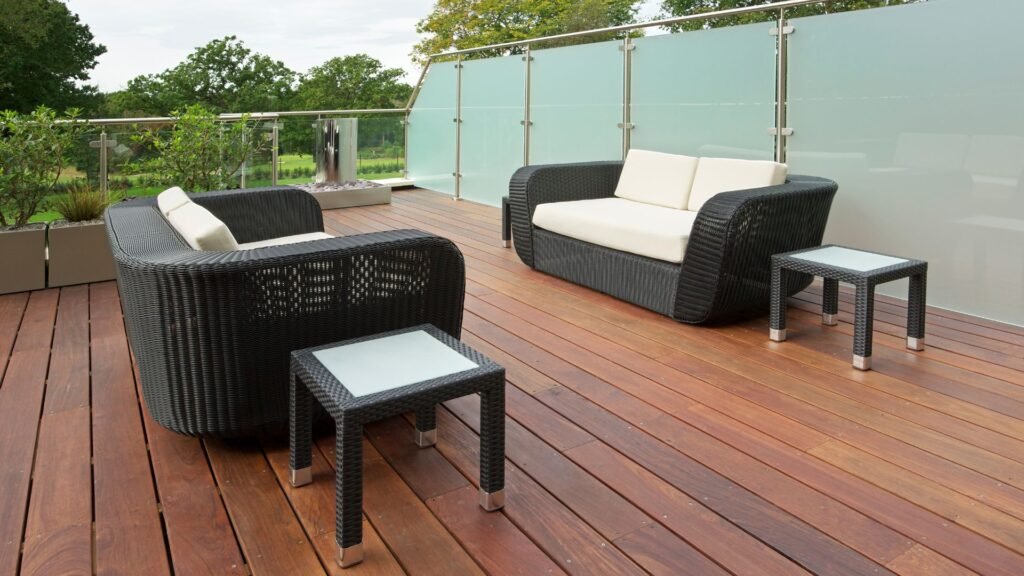
Cost Of Composite Decking In NZ: What You Need To Know
When considering composite decking for your home in New Zealand, it’s essential to look at both the upfront costs and the long-term savings. Here’s a comprehensive breakdown to help you make an informed decision about your investment.
Initial Investment: What to Expect
The initial cost of composite decking varies depending on the brand, style, and quality of materials you choose. On average, you can expect to pay anywhere between $100 – $200 per square meter for composite decking in NZ. Higher-end brands with advanced features, like UV resistance and longer warranties, tend to sit at the top of this range, while more affordable options are available for those looking to balance quality with budget.
However, it’s important to remember that composite decking offers more durability and longevity compared to traditional wood, which often makes the higher initial price a worthwhile investment.
Installation Costs: Professional vs DIY
While some homeowners may feel confident in a DIY approach to installing their composite deck, it’s worth considering the benefits of hiring a professional. In New Zealand, professional deck installation typically ranges from $80 to $150 per square meter, depending on factors like the complexity of the design, location, and labor rates.
Although DIY might save you some money upfront, professional installation ensures your deck is built to last and looks seamless. A poorly installed deck can lead to issues such as warping, improper drainage, or safety hazards, all of which can be costly to fix later. A professional can guarantee that your composite deck will not only look beautiful but also withstand the test of time.
Long-Term Savings: Lower Maintenance, Fewer Repairs
One of the biggest advantages of composite decking is the reduced maintenance costs over time. Traditional wooden decks require regular staining, sealing, and occasional repairs due to rot, splintering, or insect damage. In contrast, composite decking is made from a blend of wood fibers and plastic, making it resistant to these common issues.
While the initial investment may be higher, the long-term savings are significant. Over the years, you will spend far less on upkeep. A traditional wooden deck may need repainting or staining every two to three years, costing $500 to $1,500 depending on the size. Composite decking eliminates these recurring expenses, allowing you to enjoy your outdoor space without the hassle.
To give you an idea of the long-term savings, consider this: A traditional wood deck may require significant maintenance costs and repairs over a 10-year period, with ongoing expenses ranging from $3,000 to $7,500. Meanwhile, a composite deck requires minimal upkeep, saving you thousands over the same timeframe.
Financing and Budget Tips
For budget-conscious homeowners, the higher upfront cost of composite decking can seem daunting. However, there are several ways to manage your budget and make the investment more affordable.
1. Shop Around for Deals: Keep an eye out for sales and promotions at local hardware stores or decking suppliers. Some suppliers offer discounts on bulk purchases or during off-peak seasons. Here are a couple of good options:
- Ekodeck New Zealand: Ekodeck offers a range of composite decking products specifically designed to withstand New Zealand’s harsh weather conditions. They have options that use up to 90% reclaimed and recycled materials, making them an eco-friendly choice.
- Permadeck™: Known for its maintenance-free composite decking solutions, Permadeck provides durable and slip-resistant decking that is perfect for New Zealand conditions. They offer a 25-year structural warranty, highlighting their product’s reliability and longevity.
2. Financing Options: Many decking companies and financial institutions in New Zealand offer financing plans that allow you to spread the cost of your decking over several months or even years. These plans often come with low-interest rates, making it easier to invest in high-quality materials without a huge upfront payment.
3. Plan Ahead: If you’re not in a rush, it can pay to plan your project well in advance. This way, you can take advantage of off-season pricing or even clear-out stock on discontinued models.
4. Consider Modular Decking: Some companies offer modular composite decking kits that are easier to install and may reduce both material and labor costs. This could be an option for those who want the look of composite decking without the hefty price tag of a custom build.
By considering the long-term benefits and looking for smart ways to finance your project, you can create a beautiful, low-maintenance outdoor space that adds value to your home.
In conclusion, while composite decking may come with a higher initial price, the benefits of low maintenance, durability, and long-term cost savings make it a smart choice for Kiwi homeowners. Whether you’re installing it yourself or hiring a professional, composite decking offers a modern, hassle-free solution for enjoying outdoor living in New Zealand.

How To Choose The Right Composite Decking For Your NZ Home
Selecting the best composite decking for your New Zealand home is more than just about aesthetics; it’s about choosing materials that will last, perform well, and suit your specific needs. With New Zealand’s unique climate and the variety of brands available, making the right decision can seem overwhelming. Here’s a comprehensive guide to help you make an informed choice.
1. Consider Your Local Climate
New Zealand’s climate can be harsh on outdoor structures, so it’s crucial to choose composite decking that’s up to the task. From humid, wet winters to long, hot summers, the right deck material needs to withstand a wide range of weather conditions. If you live near the coast, where saltwater exposure is a constant concern, you’ll want to select a decking material that resists corrosion and moisture damage.
- Example: If your home is situated near the ocean, consider composite decks specifically designed for coastal environments. These are often engineered to resist saltwater, which helps reduce the wear and tear that comes from proximity to the sea.
2. Color and Style Selection
Your decking should complement the overall design of your home, making it important to carefully choose the right color and style. Composite decking comes in a wide array of colors, ranging from earthy wood tones to sleek, modern hues. Whether you want your deck to blend in with the landscape or make a bold statement, there’s an option to fit every style.
- Example: For a contemporary look, opt for lighter shades like grey or taupe. These neutral tones create a sleek, modern feel that works particularly well with minimalist architecture. On the other hand, if you’re going for a traditional aesthetic, darker wood tones such as deep brown or mahogany will add warmth and a timeless appeal to your outdoor space.
3. Brand Comparisons
When it comes to composite decking, brand reputation matters. Some of the top brands available in New Zealand are known for their durability, performance, and aesthetic appeal. It’s important to compare not only the features of each brand but also customer reviews and feedback.
- Example: Brands like Trex, Outdure, and Millboard are well-regarded in New Zealand for their high-quality products designed to withstand the local climate. Trex, for instance, offers a range of eco-friendly options, while Millboard is praised for its realistic wood-look finishes. Outdure’s modular decking systems are particularly popular for creating custom layouts tailored to the Kiwi lifestyle.
4. Warranty and Guarantees
Investing in composite decking is a long-term decision, so it’s important to choose products that come with strong warranties. A good warranty not only protects your investment but also reflects the confidence a manufacturer has in its product. Look for composite decking with comprehensive guarantees that cover issues like fading, staining, or structural damage.
- Why Warranties Matter: A deck is exposed to the elements year-round, and even high-quality materials can suffer wear and tear over time. Choosing a product with a solid warranty ensures that you’re covered if unexpected damage occurs. Warranties typically range from 10 to 25 years, with some brands offering even longer protection for specific issues like color fading.
By considering these factors—local climate, color and style, brand reputation, and warranty—you can confidently select the right composite decking for your New Zealand home. Each of these considerations plays a crucial role in ensuring your deck not only looks great but also stands the test of time. So, take the time to weigh your options carefully, and you’ll enjoy an outdoor space that enhances both your home and your lifestyle for years to come.
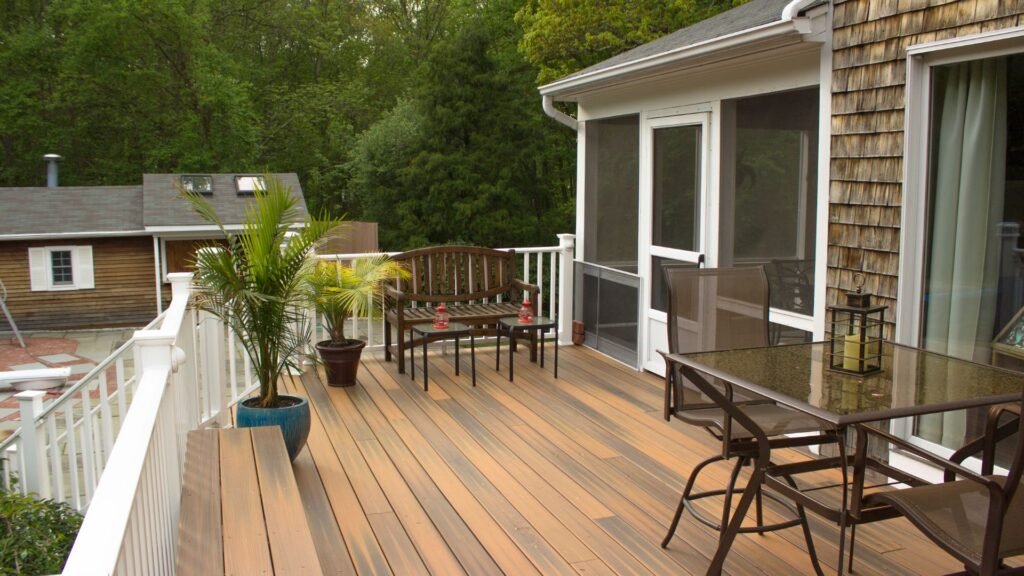
Installation: DIY Vs. Professional Help
When it comes to installing a new feature in your home, be it a deck, fence, or any other significant home improvement project, deciding between a DIY approach or hiring a professional can be a tricky choice. Let’s explore both options in detail to help you make the best decision based on your needs, skills, and budget.
DIY Installation: Is It Feasible?
Taking the DIY route is appealing to many homeowners, especially those who enjoy working with their hands or have prior experience with similar projects. It offers a chance to save money and add a personal touch to your home.
Basic Steps for DIY Installation
1. Research: Understand the full scope of the project and gather detailed instructions or blueprints.
2. Gather Materials: Purchase the necessary tools and materials based on your research.
3. Prep the Area: Measure and clear the installation area, ensuring the surface is clean and level.
4. Follow Instructions: Carefully follow the installation steps, ensuring you adhere to safety guidelines and measurements.
5. Finishing Touches: After assembly, inspect your work for any missed details, ensuring everything is securely fastened and functioning.
Tools You May Need
- Measuring tape
- Level
- Drill or screwdriver
- Hammer
- Wrenches or pliers
- Specialized tools (depending on the project, such as saws or power tools)
Pros of DIY Installation
- Cost Savings: DIY installation eliminates labor costs, which can be a significant part of a professional project.
- Personal Satisfaction: Completing a project yourself gives a sense of accomplishment and pride in your work.
Cons of DIY Installation
- Time-Consuming: Depending on the project’s complexity, DIY installation can take much longer than expected, especially if you’re new to the task.
- Potential Errors: Without professional expertise, there is a higher chance of mistakes, which could lead to costly fixes.
- Need for Specialized Tools: Some projects require tools that aren’t commonly found in a typical toolbox, leading to extra expenses if you don’t already have them.
Hiring a Professional: A Smarter Choice for Complex Projects
For larger or more complicated installations, such as building a multi-level deck or installing intricate electrical systems, hiring a professional is often the better option. A professional contractor brings years of experience and specialized knowledge, ensuring the job is done correctly and safely.
Pros of Hiring a Professional
- Expertise: Professionals are well-versed in installation techniques and building codes, ensuring that your project is structurally sound and up to standard.
- Time Efficiency: With a team of professionals, projects are typically completed faster than if you were doing them yourself.
- Quality Assurance: Professionals offer a guarantee on their work, giving you peace of mind that the job is done to high standards.
Cons of Hiring a Professional
- Higher Initial Costs: Labor fees can increase the overall cost of your project, which can be a deciding factor for those on a tight budget.
Conclusion: DIY vs. Professional Help
For smaller, straightforward projects, a confident DIY enthusiast can successfully complete installations while saving money. However, for large, complex, or safety-sensitive tasks, hiring a professional is strongly recommended to ensure quality and efficiency. Whichever route you choose, weighing the pros and cons carefully will help you achieve the best outcome for your project.
In essence, while the DIY path can offer satisfaction and savings for simpler tasks, professional help is worth the investment for bigger, more intricate projects. This balance will not only protect your home’s value but also give you peace of mind.
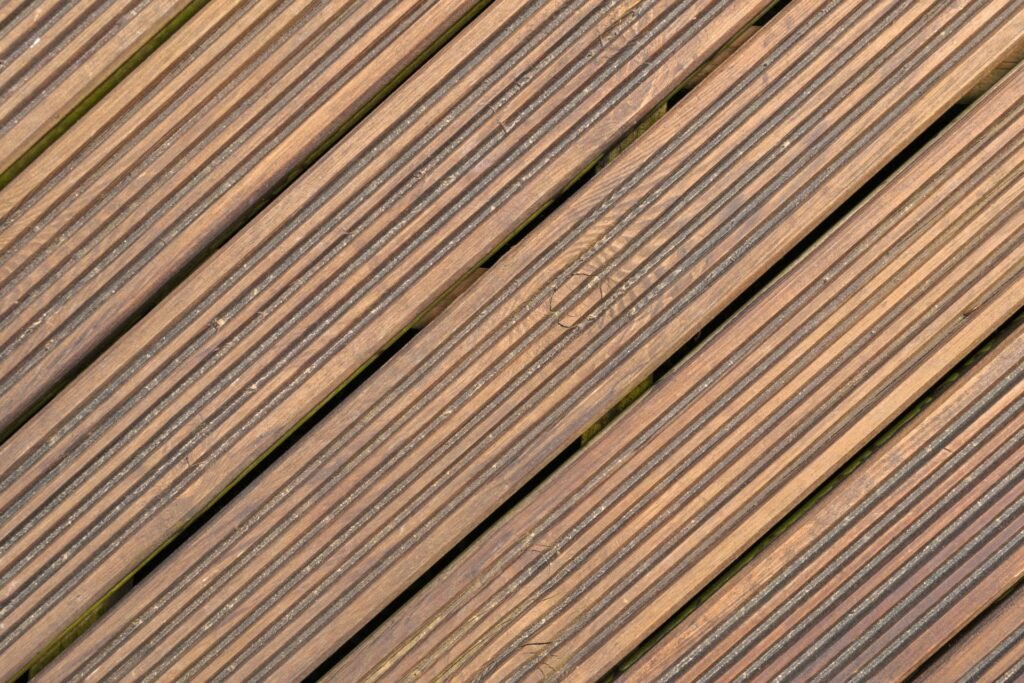
Maintenance And Care Tips For Composite Decking
Proper care and maintenance can significantly extend the life and beauty of your composite decking. Here are some essential tips to ensure your deck remains in pristine condition all year round.
Basic Cleaning Routine
Maintaining the cleanliness of your composite decking is relatively simple. One of the most effective ways to keep it looking fresh is by establishing a regular cleaning routine using basic household tools. All you need is some soap, water, and a soft-bristle brush.
Start by clearing away any loose debris like leaves or dirt. Next, mix mild dish soap with warm water in a bucket. Gently scrub the deck using the soft brush, working in the direction of the grain. This helps lift dirt and grime without damaging the surface. After scrubbing, rinse off the soap thoroughly with a hose, ensuring that no residue remains, as it can lead to slippery surfaces. For best results, aim to clean your deck at least twice a year—ideally in spring and fall.
Preventing Damage
Composite decking is designed to withstand the elements, but it’s still important to take preventative measures to avoid unnecessary wear and tear. Simple actions can help maintain your deck’s longevity, keeping it looking brand new for years to come.
One common concern is the potential for scratches or stains, particularly in high-traffic areas or places where heavy furniture is placed. To prevent this, consider adding outdoor rugs underneath furniture, which can act as a protective barrier. Ensure that these rugs are breathable to avoid trapping moisture, which could harm the deck.
Another factor to consider is exposure to harsh UV rays. Over time, constant exposure to the sun can cause fading or discoloration. To combat this, using UV-resistant sealers can be an effective way to preserve the deck’s color. These sealers not only shield the surface from the sun but also add an extra layer of protection against water damage.
Winter Care
When the winter months roll in, especially in snowy or frosty regions, your composite deck will require some special attention. Taking proper precautions can help prevent any potential damage from freezing temperatures or heavy snow buildup.
Start by sweeping off any snow or ice using a plastic shovel—avoid metal shovels, as they can scratch or damage the deck surface. If ice forms on your deck, you can use a calcium chloride-based ice melt, which is safe for composite materials. Be sure to check the manufacturer’s recommendations to ensure compatibility with your deck brand.
Before winter sets in, consider applying a protective deck treatment to help repel moisture and prevent frost damage. If you’re in an area that experiences frequent snowfalls, clearing your deck regularly will prevent water from seeping into any cracks and freezing, which could cause damage.
Addressing Stains
Even with the best care, accidents can happen. If your composite deck gets stained—whether it’s from wine, oil, or grease—quick action is key to preventing permanent damage.
For liquid stains like wine or oil, begin by blotting the spill with a paper towel or clean cloth. Avoid rubbing the stain, as this could spread it further. Next, use a mixture of soap and warm water to gently scrub the area with a soft brush. In cases where the stain is more stubborn, using a composite deck cleaner can help lift it without harming the surface.
For grease stains, such as from a barbecue, clean the affected area as soon as possible using the same soap and water solution. If the stain persists, a degreaser that’s safe for composite materials can be used to break down the grease.
With regular cleaning and a few preventative measures, your composite deck can maintain its beautiful appearance for many years. Simple steps like adding rugs, using UV-resistant sealers, and taking extra care during winter will not only protect your deck from damage but also enhance its overall durability. Staying proactive in stain management will ensure that your outdoor space remains inviting and clean, no matter the season.
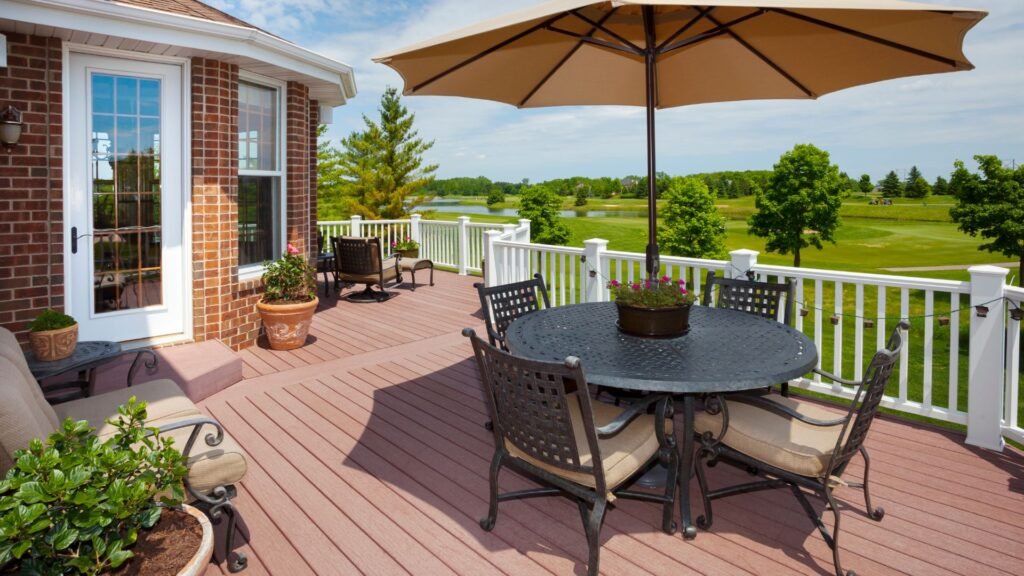
Real-Life Examples Of Composite Decking In NZ Homes
When considering composite decking for your home, nothing beats seeing real-life examples of how it can transform outdoor spaces. In New Zealand, homeowners have embraced composite decking in various creative ways, from poolside retreats to stylish garden patios and rooftop terraces. Let’s dive into some standout local projects that highlight the versatility and beauty of composite decking in NZ homes.
Showcase Local Projects
Composite decking has been used in numerous homes across New Zealand, each with its unique charm and purpose. Whether you’re looking to upgrade a modest backyard or create a luxurious poolside oasis, composite decking offers a wide range of styles, colors, and textures that can fit any design preference.
1. Poolside Decks
In Auckland, a family decided to renovate their outdoor area with composite decking around their pool. They chose a weathered gray finish that perfectly complemented the blue tones of the water, creating a seamless and modern look. One of the homeowners, Sarah, shared:
“We love how our composite deck doesn’t get too hot in the sun, and it’s easy to clean after a day by the pool. It’s been a game-changer for us, especially with kids.“
2. Garden Patios
In Christchurch, a couple transformed their small garden into a welcoming outdoor space using rich, wood-look composite decking. They installed built-in seating and planters, giving the area a cozy and natural feel. The homeowner, John, commented:
“The deck has brought our garden to life. It feels like we’ve added another room to our home, one where we can relax and enjoy the outdoors without worrying about constant maintenance.“
3. Rooftop Terraces
Wellington’s skyline is dotted with rooftop terraces that utilize composite decking for both its durability and design flexibility. A city apartment owner recently revamped her rooftop terrace with a sleek, dark-toned composite deck that’s perfect for entertaining. She explained:
“The deck gives my rooftop a clean, sophisticated look, and the fact that it can withstand the unpredictable Wellington weather is a huge plus. No more worrying about rot or water damage!“
Each of these projects highlights how composite decking adapts to different environments and styles, offering a solution that’s as durable as it is aesthetically pleasing.
Before and After Photos: Inspiring Transformations
One of the most exciting aspects of choosing composite decking is seeing the remarkable transformations it can bring to an outdoor space. Before and after photos can be incredibly inspiring for homeowners who are on the fence about whether or not to make the switch.
A Backyard Revival in Tauranga
- Before: The original deck was made of traditional timber, which had weathered poorly over time, showing signs of rot and discoloration. It required frequent maintenance, and the homeowners were tired of the ongoing upkeep.
- After: By replacing the old timber with a sleek, composite deck in a warm, natural wood tone, the space was completely revitalized. Not only does it look stunning, but it’s also much more functional with the addition of custom seating and planters. The homeowners now spend more time outdoors, and their deck has become the focal point of their backyard.
A Coastal Makeover in Dunedin
- Before: Situated near the coast, this home’s deck was constantly exposed to salty air and strong winds, causing the timber to degrade quickly. The homeowners found themselves having to repair or replace parts of the deck every few years.
- After: The installation of composite decking has eliminated these problems. The new deck, with its coastal-inspired color, not only complements the natural surroundings but also stands strong against the elements. The homeowners no longer worry about damage or upkeep, and they’ve turned their deck into a year-round entertainment space.
These before and after stories demonstrate the incredible impact that composite decking can have, transforming worn-out spaces into beautiful, low-maintenance outdoor living areas. The right deck can make all the difference, and with composite materials, the possibilities are endless.
Real-life examples of composite decking in New Zealand homes serve as a powerful source of inspiration for those considering upgrading their outdoor spaces. Whether you’re drawn to a poolside deck that stays cool underfoot, a charming garden patio, or a sophisticated rooftop terrace, composite decking offers a solution that is as functional as it is beautiful. With low maintenance, durability, and a variety of design options, it’s no wonder more Kiwi homeowners are making the switch.
If you’re ready to elevate your outdoor space, take a cue from these local projects and discover how composite decking can bring your vision to life.

FAQs: About Composite Decking NZ
What is composite decking made of?
Composite decking is made from a blend of recycled wood fibers and plastic, along with bonding agents and pigments. This mixture creates a durable, low-maintenance material that mimics the appearance of natural wood while offering better longevity and resistance to weathering.
Is composite decking more expensive than traditional timber?
While the initial cost of composite decking may be higher than traditional timber, it proves to be more cost-effective over time. Composite decking requires little to no maintenance, meaning you save on long-term upkeep like sanding, staining, and sealing, which are necessary with timber.
Can composite decking withstand New Zealand’s harsh climate?
Yes, composite decking is designed to resist NZ’s diverse weather conditions, including heavy rain, strong UV rays, and saltwater exposure in coastal areas. It doesn’t warp, crack, or fade as easily as traditional wood, making it an excellent choice for the Kiwi climate.
Does composite decking need maintenance?
Composite decking is low-maintenance, requiring only basic cleaning to keep it in good condition. You can wash it with soap and water or use a soft brush to remove dirt and debris. Unlike timber, it doesn’t need to be painted, stained, or sealed.
How long does composite decking last?
On average, composite decking can last 25 to 30 years, depending on the quality of the product and installation. Many composite decking brands offer warranties that reflect this longevity, giving homeowners peace of mind.
Is composite decking slippery when wet?
High-quality composite decking is designed to be slip-resistant, even when wet. Some products offer textured surfaces that improve traction, making them a safe option for areas prone to moisture, such as poolside decks or rainy regions.
Can I install composite decking myself?
Yes, it’s possible to install composite decking as a DIY project, especially if you’re experienced with similar construction tasks. However, for complex designs or large areas, hiring a professional installer may ensure a more durable and flawless finish.
What colors and styles are available in composite decking?
Composite decking comes in a wide range of colors, finishes, and textures, from natural wood tones like oak and mahogany to sleek modern grays and blacks. This variety allows you to choose a style that matches your home’s aesthetic and outdoor environment.
Is composite decking environmentally friendly?
Yes, composite decking is eco-friendly. It is made from recycled materials, including reclaimed wood and plastic, reducing the need for virgin timber. Its durability and low maintenance requirements also minimize environmental impact over the long term.
Does composite decking fade over time?
High-quality composite decking is engineered to resist fading. While slight fading may occur after years of exposure to intense sunlight, many brands offer UV-resistant coatings that help retain the deck’s original color for longer periods.
Conclusion
Composite decking is a smart choice for New Zealand homes due to its numerous benefits, including exceptional durability, low maintenance requirements, cost savings, and environmental sustainability. Unlike traditional wood, composite decking resists rot, fading, and warping, making it a long-lasting option that saves homeowners time and money on upkeep. Its eco-friendly nature, often made from recycled materials, also aligns with the growing trend toward sustainable living. Whether you’re renovating or building new, composite decking offers a stylish and practical solution to enhance any outdoor space. Ready to upgrade your home? Explore local suppliers or consult an installation expert to find the perfect composite decking option for your next project, and take the first step toward a more beautiful, low-maintenance outdoor area.
About the Author:
Mike Veail is a recognized digital marketing expert with over 6 years of experience in helping tradespeople and small businesses thrive online. A former quantity surveyor, Mike combines deep industry knowledge with hands-on expertise in SEO and Google Ads. His marketing strategies are tailored to the specific needs of the trades sector, helping businesses increase visibility and generate more leads through proven, ethical methods.
Mike has successfully partnered with numerous companies, establishing a track record of delivering measurable results. His work has been featured across various platforms that showcase his expertise in lead generation and online marketing for the trades sector.
Learn more about Mike's experience and services at https://theleadguy.online or follow him on social media:



